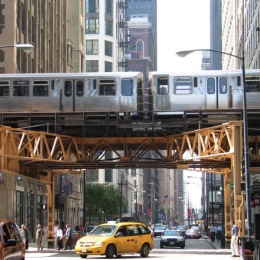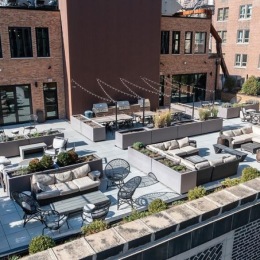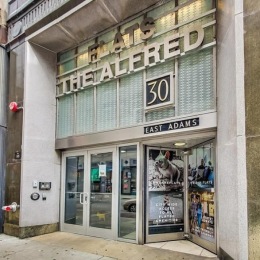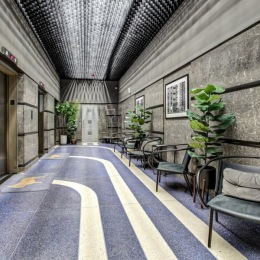Breeze Through Summer: Why Apartments with Central Air Are a Must
Why Central Air Makes Summer Living Effortless
Apartments with central air offer consistent cooling, superior air filtration, and quiet operation that window units simply can't match. Here's what makes central air systems the gold standard for apartment living:
Key Benefits:
- Whole-home cooling through ductwork and vents
- Built-in air filtration that removes allergens and dust
- Quiet operation - no noisy compressors by your window
- Programmable thermostats for energy savings up to 1% per degree adjusted
- Humidity control that prevents mold and maintains comfort
- Higher property value and rental appeal
Picture this: It's August in Chicago, and the temperature hits 95°F. Your neighbor with a window unit is cranking up the volume on their TV to compete with the AC noise, while you're enjoying cool, filtered air throughout your entire apartment - silently.
The research shows that properly sized central air units remove the right amount of humidity as they cool, reducing both cooling costs and maintenance headaches. For apartments between 700-1,000 square feet, an 18,000 BTU central air system provides optimal efficiency without the energy waste of oversized units.
With over 20,600 apartments in major cities now featuring central air, this amenity has shifted from luxury to necessity. Modern systems even include smart technology that helps property managers boost resident satisfaction by up to 20% through proactive maintenance.

Central Air 101: How It Works & Safeguards Air Quality
Understanding how central air systems work helps us appreciate why they're superior to other cooling options. At its core, a central air system uses three main components: a compressor (located outside), evaporator coils (inside your unit), and a network of ductwork that distributes conditioned air throughout your apartment.
The process begins when your thermostat signals the system to cool. The compressor pressurizes refrigerant, which flows to the evaporator coils inside your apartment. As warm air from your living space passes over these cold coils, heat is absorbed and the cooled air is distributed back through your apartment via ductwork and vents.
But here's where it gets interesting - central air systems don't just cool, they also manage air quality in ways that standalone units can't match. The return vents pull air from throughout your apartment, passing it through MERV-rated filters that capture dust, pollen, and other airborne particles before the air is conditioned and redistributed.
Most apartment central air systems primarily recirculate indoor air for energy efficiency, but building codes (ICC Section 1203.4.1) mandate that natural ventilation equal at least 4% of the floor area. This means your apartment must have operable windows, doors, or other openings that provide fresh air exchange. Some newer systems include heat-exchange models that bring in outdoor air while maintaining energy efficiency.
The filtration aspect is crucial for air quality. While your system recirculates air, it's constantly filtering out contaminants. This is why we recommend changing filters regularly - a clogged filter not only reduces efficiency but also compromises the air quality benefits that make central air so valuable.
Scientific research on indoor air quality shows that properly maintained central air systems can significantly reduce indoor pollutants, making them particularly beneficial for residents with allergies or respiratory sensitivities.
Core Benefits of Apartments with Central Air
When we evaluate the advantages of central air systems, the benefits extend far beyond simple cooling. These systems transform how we experience our living spaces, offering comfort, health, and economic advantages that other cooling methods simply can't match.
The most immediate benefit is consistent temperature control throughout your entire apartment. Unlike window units that create hot and cold spots, central air distributes conditioned air evenly through strategically placed vents. This means your bedroom stays as comfortable as your living room, and you won't find yourself clustering around a single cooling unit during peak summer heat.
Quiet operation is another game-changer. The compressor - the noisiest component - sits outside your building, while the indoor components operate virtually silently. This is particularly valuable in urban environments like Chicago, where noise pollution can significantly impact quality of life. You can sleep peacefully, work from home without distraction, and enjoy conversations without competing with AC noise.
The humidity control aspect is often underestimated but critically important. Properly sized central air units remove the right amount of humidity as they cool, preventing that clammy feeling you get with oversized or inefficient systems. This humidity control also helps prevent mold and mildew growth, protecting both your health and your belongings.
Health & Comfort Advantages of Apartments with Central Air
The health benefits of apartments with central air extend well beyond temperature control. The built-in filtration system continuously removes allergens, dust, and other airborne particles from your living space. This is particularly beneficial for residents with asthma, allergies, or other respiratory conditions.
The consistent air circulation also prevents stagnant air pockets where pollutants can accumulate. Unlike portable or window units that only affect localized areas, central air systems ensure fresh, filtered air reaches every corner of your apartment. This whole-home approach to air quality management is impossible to achieve with standalone cooling units.
Balanced humidity levels - typically maintained between 30-50% - create an environment that's hostile to dust mites, mold, and bacteria while remaining comfortable for human occupants. This optimal humidity range also helps preserve wooden furniture, prevents static electricity buildup, and maintains the integrity of books, artwork, and other moisture-sensitive items.
Added Value: How Apartments with Central Air Influence Rent & Resale
Apartments with central air command premium rents and higher resale values in today's competitive real estate market. The data shows that central air has evolved from a luxury amenity to a standard expectation, particularly in markets with hot summers.
From a property value perspective, central air systems represent a significant infrastructure investment that adds tangible value to the property. Unlike window units that tenants can install themselves, central air is a permanent building feature that improves the overall appeal and marketability of the unit.
The energy efficiency of modern central air systems also appeals to environmentally conscious renters who want to minimize their carbon footprint while maintaining comfort. This demographic often represents higher-income tenants who are willing to pay premium rents for quality amenities.

Central Air vs. Window Units, Mini-Splits & Portables
Understanding the differences between cooling options helps us appreciate why central air stands out as the superior choice for apartment living. Each system has its place, but when it comes to whole-home comfort, efficiency, and convenience, central air leads the pack.
Window units are the most common alternative, typically cooling 150-800 square feet depending on their BTU rating. A 12,000 BTU window unit can handle about 550 square feet, while larger 18,000 BTU units cover up to 1,000 square feet. However, window units create uneven cooling, with cold spots near the unit and warm areas in distant rooms. They're also noisy, block natural light, and can be security risks in ground-floor apartments.
Mini-split systems offer a middle ground, providing zone control without extensive ductwork. These systems can be highly efficient and quieter than window units, but they require professional installation and can be visually intrusive with indoor wall-mounted units. They're excellent for specific room cooling but lack the whole-home filtration benefits of central air.
Portable air conditioners offer flexibility but are generally the least efficient option. They require window venting, take up floor space, and typically struggle to cool areas larger than 400-500 square feet effectively. They're also among the noisiest options since all components are located inside your living space.
Central air systems excel in every category that matters for apartment living: whole-home cooling, quiet operation, air filtration, energy efficiency, and aesthetic appeal. The only components visible inside your apartment are the attractive vents and thermostat - no bulky units, no blocked windows, no compromised security.
From a maintenance perspective, central air systems are typically serviced by building management, removing the burden from individual tenants. This professional maintenance ensures optimal performance and extends system life, while also providing peace of mind that your cooling system will work when you need it most.
Dollars & Sense: Energy, Costs & Maintenance
The financial aspects of central air systems reveal why they're often the most cost-effective cooling solution despite higher upfront costs. Modern central air systems achieve SEER (Seasonal Energy Efficiency Ratio) ratings of 13-20 or higher, with higher numbers indicating better efficiency.
Smart thermostats, now standard in many central air installations, can save about 1% on energy bills per degree adjusted for every eight hours of runtime. This means setting your thermostat back 7-8 degrees when you're away for eight hours can reduce your cooling costs by 7-8%. Over a cooling season, these savings add up significantly.
Proper sizing is crucial for both comfort and efficiency. For apartments between 700-1,000 square feet, an 18,000 BTU central air system typically provides optimal performance. Oversized units cool too quickly without removing sufficient humidity, leading to clammy conditions and higher energy bills. Undersized units run constantly, struggling to maintain comfortable temperatures and wearing out components prematurely.
The maintenance aspect is where central air systems truly shine in apartment settings. Many new HVAC units feature computers and microprocessors that generate operational data, helping property managers implement proactive maintenance strategies. This data-driven approach has been shown to boost resident satisfaction by up to 20% by preventing unexpected breakdowns and maintaining optimal performance.
Latest research on HVAC data patterns demonstrates how modern systems can predict maintenance needs, schedule service during optimal times, and even adjust performance based on usage patterns and weather forecasts.
From a risk management perspective, central air systems also contribute to fire safety. With heating equipment being the second leading cause of residential fires (averaging 45,900 heating fires annually in the U.S.), professionally maintained central systems with proper electrical connections and regular inspections are significantly safer than multiple plug-in units that can overload circuits.
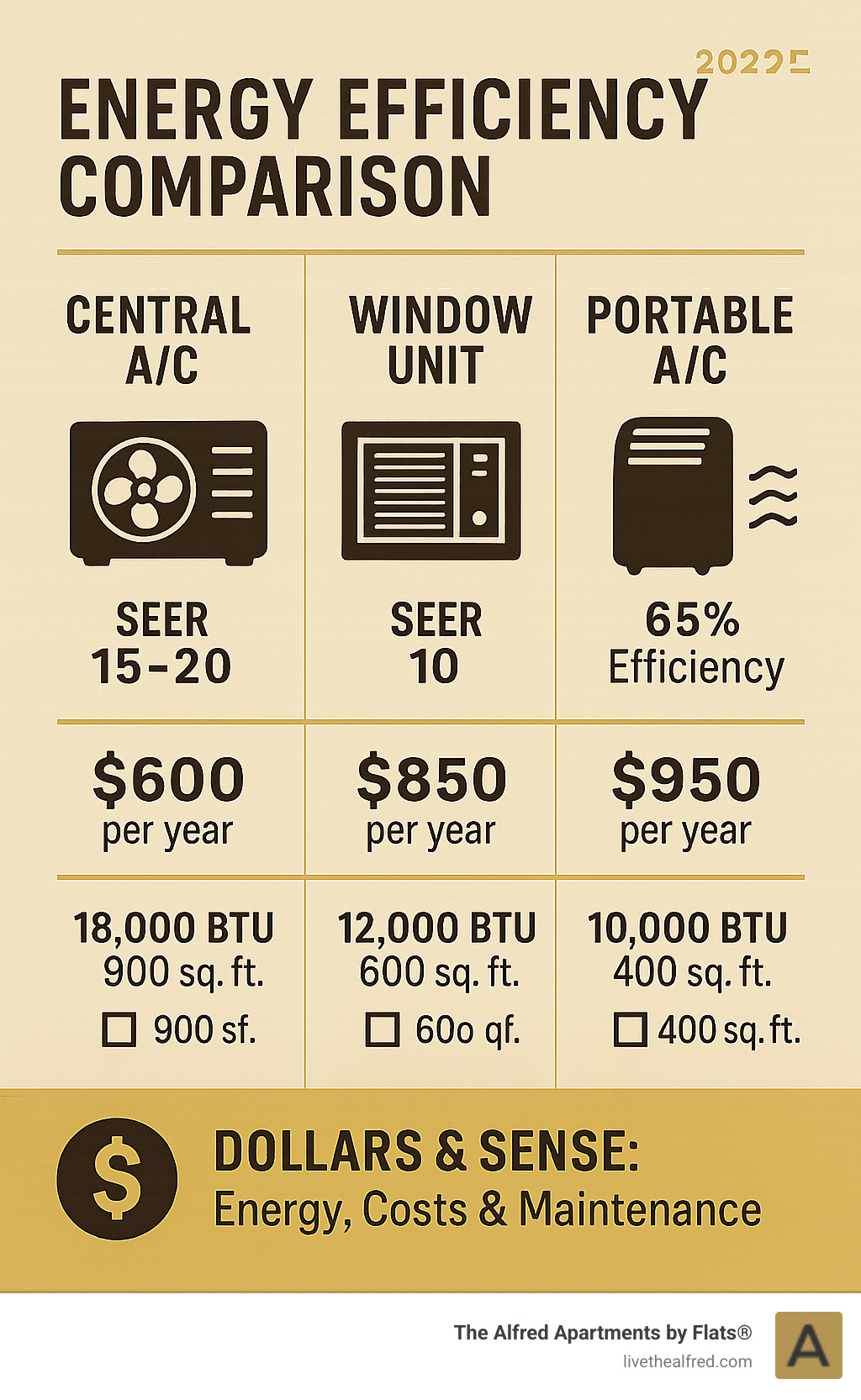
Renter Roadmap: Finding, Inspecting & Thriving in Apartments with Central Air
When searching for apartments with central air, we recommend starting with buildings that highlight energy efficiency credentials. LEED Gold certified buildings, like many luxury properties in Chicago's Loop district, typically feature high-efficiency central air systems as part of their overall environmental strategy.
During your apartment search, pay attention to lease clauses related to HVAC maintenance and usage. Some leases specify tenant responsibilities for filter changes, while others include this in building maintenance services. Understanding these details upfront prevents surprises and ensures you can properly maintain your system for optimal performance.
When touring potential apartments, test the system if possible. Ask about average utility costs for similar units during peak cooling months, and inquire about the system's age and maintenance history. Well-maintained systems in quality buildings often have detailed service records that property managers are happy to share.
Energy-efficient buildings often provide additional benefits beyond just central air. These properties typically feature better insulation, high-performance windows, and smart building systems that work together to minimize energy consumption while maximizing comfort.
More info about Amenities can help you understand how central air fits into the broader amenity package that makes apartment living exceptional.
Quick Checklist for Touring Apartments with Central Air
When evaluating apartments with central air, use this checklist to ensure you're getting a quality system:
Vent Placement & Airflow:
- Are supply vents positioned to provide even air distribution?
- Are return vents unobstructed and appropriately sized?
- Can you feel adequate airflow from supply vents?
System Controls:
- Is the thermostat modern and programmable?
- Are the controls intuitive and responsive?
- Does the system respond quickly to temperature adjustments?
Noise Levels:
- Listen for unusual sounds when the system cycles on
- Check for vibrations or rattling from vents or ductwork
- Ensure the indoor operation is acceptably quiet
Maintenance Access:
- Are filters easily accessible for regular changes?
- Is there clear information about maintenance responsibilities?
- Are service request procedures clearly outlined?
Energy Efficiency:
- Ask about the system's SEER rating and age
- Request average utility costs for the unit
- Inquire about any energy-saving features or smart controls

Troubleshooting & Optimization Tips
Once you're living in an apartment with central air, these optimization strategies will help you maximize comfort and efficiency:
Airflow Management:
- Keep supply and return vents unobstructed by furniture or curtains
- Ensure interior doors remain open or have adequate undercut for air circulation
- Consider the placement of heat-generating appliances and electronics
Smart Thermostat Usage:
- Set temperatures 7-8 degrees higher when away for extended periods
- Use programmable schedules to align cooling with your daily routine
- Take advantage of humidity control settings if available
Filter Maintenance:
- Check filters monthly and replace as needed (typically every 1-3 months)
- Use the highest MERV rating recommended for your system
- Consider upgrading to pleated or HEPA filters for better air quality
Seasonal Adjustments:
- Gradually adjust to higher temperatures as the season progresses
- Use ceiling fans to improve comfort at higher thermostat settings
- Close blinds or curtains during peak sun hours to reduce cooling load
Communication with Management:
- Report any unusual noises, odors, or performance issues promptly
- Keep records of any maintenance requests or service calls
- Provide feedback on system performance during routine inspections
Conclusion
Living in apartments with central air transforms the summer experience from endurance test to effortless comfort. The combination of consistent cooling, superior air quality, quiet operation, and energy efficiency makes central air the clear choice for discerning renters who value both comfort and quality of life.
At The Alfred Apartments by Flats®, we understand that exceptional apartment living requires more than just location - it demands the perfect blend of restored historic architecture and modern conveniences like central air. Our Chicago Loop location offers residents the best of both worlds: the character and charm of carefully preserved historic details combined with contemporary HVAC systems that ensure year-round comfort.
The data is clear: central air systems provide measurable benefits in energy efficiency, air quality, and resident satisfaction. With properly sized units removing optimal humidity levels, smart thermostats enabling precise control, and professional maintenance ensuring reliable operation, central air has evolved from luxury amenity to essential infrastructure.
As summer temperatures continue to rise and air quality concerns grow, the value of apartments with central air will only increase. The investment in comfort, health, and peace of mind pays dividends every day, from restful sleep on sweltering nights to productive work-from-home days without the distraction of noisy window units.
When you're ready to experience the difference that central air makes in apartment living, consider how this essential amenity fits into your overall lifestyle and comfort priorities. The right apartment with properly designed and maintained central air doesn't just keep you cool - it creates the foundation for exceptional urban living.
More info about Luxury Living in Chicago can help you find how central air integrates with other premium amenities to create the ultimate apartment living experience in one of America's greatest cities.


